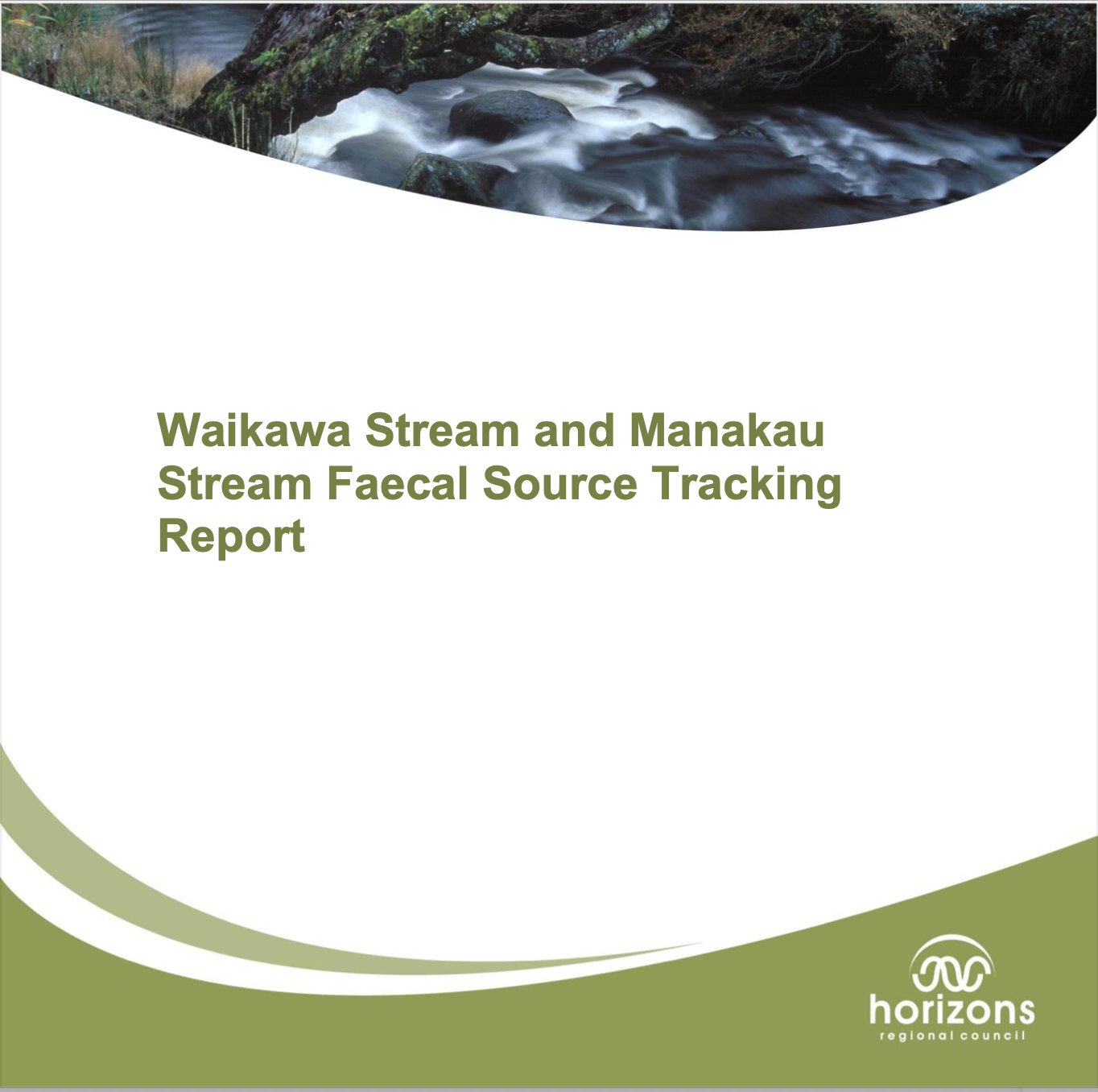
In 2015 Horizons Regional Council produced a report on water quality in the Waikawa Stream: "Waikawa Stream and Manakau Stream Faecal Source Tracking Report”, August 2015, Horizons Report 2015/EXT/1460, authored by Michael Patterson, Research Associate and Logan Brown, Senior Scientist.
The data was gathered during the period December 2014 to April 2015 but since then a lot of work such as fencing and riparian planting has been carried on that could influence the water quality in this area. I’ve contacted Horizons to ask if they have any updates.
One of the interesting findings in the 2015 report was that the E. Coli measured at the footbridge was probably from a mixture of cattle and bird sources and not septic tanks:
Water quality monitoring undertaken during the bathing season of 2013–14 showed that the Waikawa Estuary regularly had high levels of Escherichia coli (E. coli) that were unable to be accounted for with our current knowledge of land use activities in this catchment. To further investigate the source of this microbiological contamination, a detailed water quality sampling programme was conducted throughout the Waikawa catchment during the period December 2014 to April 2015.
At sites where high levels of E. coli were detected, faecal source tracking was used to identify the source of this contamination. Faecal source tracking looks specifically at humans, sheep, cows and birds as potential sources of the contamination and is able to distinguish between these groups and identify the major contributor of contamination.
During low flow conditions – that is, when there had not been prior rainfall, and when E. coli is generally expected to be low – high E. coli counts were recorded in the upper reaches of the Manakau Stream (a major tributary of Waikawa Stream) and in the lower reaches of Waikawa Stream. Faecal source tracking at three sites (Manakau Stream at South Manakau Road, Waiauti at upstream Manakau Stream confluence and Waikawa Estuary at Footbridge) was carried out, with the following key findings:
* No human markers were detected at any of the sites, meaning that leaking/overflowing septic tanks are not a major contributor to the E. coli in this catchment; and
* The faecal contamination at the upstream sites is sourced from ruminants, specifically cattle, and land use analysis suggests this is not from dairy cows. At the Waikawa Estuary contamination appears to be derived from a mixture of cattle and bird sources.
Read the report: 2015 water quality report from Horizons Regional Council, 2MB PDF.
Update: in response to my query about updates on this report:
I can confirm that no further faecal source tracking has been undertaken in this catchment since that report was produced we however, continue to monitor water quality at a number of sites within the Waikawa catchment with this information being updated on an annual basis to LAWA https://www.lawa.org.nz/explore-data/manawat%C5%AB-whanganui-region/river-quality/waikawa/ or further analysis is available on our Oranga Wai webpage https://storymaps.arcgis.com/stories/944e3a55bcfd4d0ea646718f27c0c67e
As you note work in the catchment has continued with stream fencing and planting however, the scale of those works to date has not yet resulted in a change in the trend for E. coli https://www.lawa.org.nz/explore-data/manawat%C5%AB-whanganui-region/river-quality/waikawa/waikawa-stream-at-huritini/